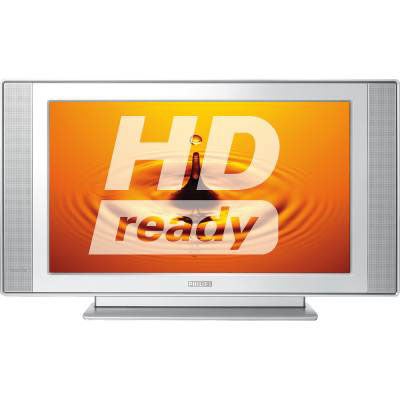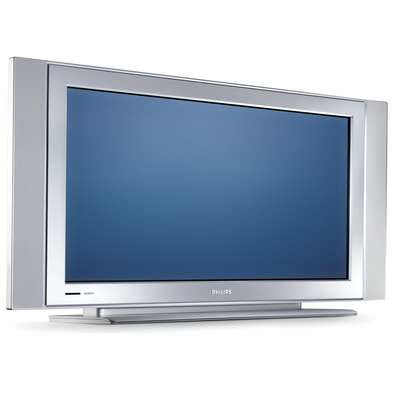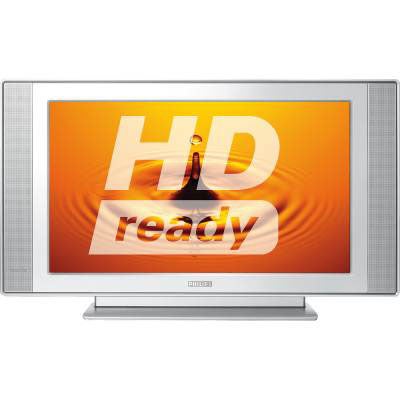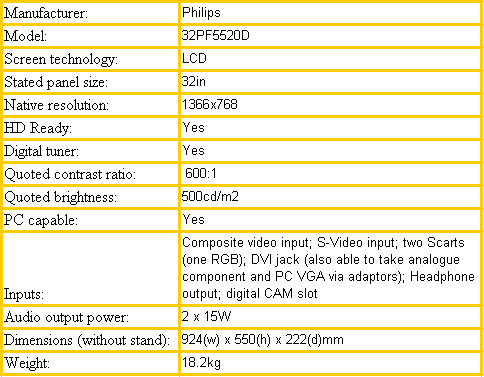Philips 32PF5520D 32in LCD TV Review
Philips 32PF5520D 32in LCD TV
This TV may have been around a while, but the recent price drop could make it worth a look.

Verdict
Key Specifications
- Review Price: £800.00
Over the past few days we’ve covered two extremes of Philips current LCD range. At one end we’ve checked out the high-end and feature packed 37in 37PF9830, while at the other we saw the 20in 20PF5320, one of the UK’s smallest and most affordable HD Ready LCD TVs. So we thought we’d round off a little Philips ‘trilogy’ with something more central in Philips’ current range: the 32in 32PF5520D.
This TV has actually been around for a while now, truth be told. But it’s still widely available and warrants our attention for the very good reason that with its age has come a price cut; having launched at a fairly hefty £1,300, it can now be yours for just £800. So is the 32PF5520D now the LCD world’s biggest bargain, or has its performance started to look dated?

After the aesthetic extravagances of the high-end 37PF9830, it has to be said that the 32PF5520D is as dull as dishwater. Everything about it, from the bland grey colour scheme to the plain rectangular lines and plasticky finish smacks of something made on a shoestring. It even sticks out further round the back than most LCDs, for heaven’s sake. Just as well we’re not the sort of people to judge a TV by its cover…
Unfortunately, though, our mood isn’t improved by the TV’s connections. Particularly alarming is the apparent lack of component video inputs and an analogue PC jack, leaving us with just a DVI port and a pair of SCARTs for high-quality picture duties. This seems particularly weird since the TV proudly wears the AV world’s HD Ready badge of honour, even though to earn that badge you have to have component video inputs. Hmm.
The answer to this apparent conundrum lies in adaptors included in the 32PF5520D’s packaging. With these it’s possible to get both analogue PC and high definition component video feeds into the TV via the DVI jack.
But of course, this presents two distinct problems. First, the adaptors are quite fiddly to use. Second – and this is really quite serious – you have potentially three entirely different bits of source gear vying for the same single input. So should you be in the position of wanting to connect a PC, an Xbox 360 and an upscaling DVD player or Sky’s high definition receiver to the TV, you’ll have to regularly pop round the back of the TV to switch the DVI connections over. We guess this will give couch potatoes a reason to have to stand up every now and then, but it’s hardly very 21st century, is it?!
There is at least one piece of good news with the 32PF5520D’s connectivity, though: it includes a digital audio output that for piping out Dolby Digital 5.1 audio streams to a suitable AV surround sound receiver.
But nobody in the UK except Sky broadcasts Dolby Digital 5.1 soundtracks, we (probably!) hear you cry. This is currently true, but Philips is thinking ahead to a time when the Freeview digital terrestrial broadcast service might finally deliver the odd 5.1 soundtrack or two. It’s just a shame Philips didn’t apply the same future-proof thought to the rest of the 32PF5520D’s connections.

As you may have picked up from the previous paragraph, the 32PF5520D features a built-in digital TV tuner – really quite a find on a 32in LCD costing just £800. What’s more, rounding out the TV’s HD Ready status is a healthy native resolution of 1,366 x 768 and compatibility with the key 720p and 1080i HD picture formats. There’s no 1080p capability, though.
In terms of other features, there are only two worth troubling you with. First, the digital tuner supports the 7-day electronic programme guide now broadcast by Freeview, right down to letting you filter its contents according to programme type and set timer events simply by selecting shows in the listings.
The other significant discovery is Active Control, which assesses the content of the source image and automatically adjusts facets of its picture’s appearance in response to what it finds. You can even set this system to factor in the amount of ambient light in your room, as measured by a built in light sensor.
Any enthusiasm we might have finally started to feel towards the 32PF5520D, though, slowly dissipates again as we get stuck into its picture performance.
The first and most disappointing problem is a lack of black level. Feed the TV a particularly dark film like Alien, and you’ll find yourself straining to see through the grey mist which hangs over everything that’s supposed to look black. As well as being tiring on your eyes, this problem also leaves the picture looking a bit one-dimensional and uninvolving.
The next aspect of the 32PF5520D’s performance that perhaps reveals its age relative to some of the newer kids on the block is the way it struggles with movement. Moving objects appear blurred and indistinct, suggesting that the screen’s LCD response time isn’t as fast as we’d like. This problem contributes to a general lack of sharpness, meanwhile, that’s severe enough with standard definition broadcasts to at times make them look almost out of focus.

Philips TVs can usually be relied on to produce excellent colours – but not the 32PF5520D. Things look solid enough during bright scenes, we guess, with some decent vibrancy and tones. But the less aggressive palette of darker scenes looks muted and flat.
We should in the interests of fairness say here that even with all these problems this Philips set isn’t actually a bad picture performer. In fact, with HD sources two of the key problems – motion smear and lack of sharpness – are considerably reduced, making HD sources at least fairly enjoyable. But by no means can the 32PF5520D’s pictures ever be described as better than average.
There’s nothing in the 32PF5520D’s audio to put a smile on our faces either. The speakers have a go certainly, but ultimately a lack of sheer power and range means that bass can sound dislocated and unclear, while treble details are quickly squeezed out as soon as there’s much going on in the mid-range.
”’Verdict”’
We have no argument with the idea of Philips leaving one of its older models on shelves at a reduced price; we’re all in favour of anything that lets people get their hands on an HD Ready TV more cheaply. But the 32PF5520D simply asks you to make more compromises with connectivity, pictures and sound than we feel comfortable with, even at £800.

How we test televisions
We test every TV we review thoroughly over an extended period of time. We use industry standard tests to compare features properly. We’ll always tell you what we find. We never, ever, accept money to review a product.
Trusted Score
Score in detail
-
Value 7
-
Image Quality 6
-
Sound Quality 6

